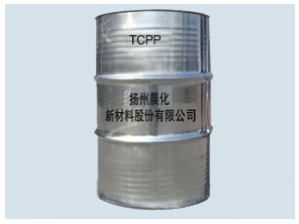Flame retardant is a functional assistant that gives flammability to flammable polymers. It is mainly designed for the flame retardancy of polymer materials. There are many types of flame retardants, which can be divided into additive flame retardant and reactive flame retardant according to the use method. Additive flame retardants are added to the polymer by mechanical mixing method to make the polymer have flame retardancy. At present, the additive flame retardants mainly include organic flame retardant and inorganic flame retardant, halogenated flame retardant (organic chloride and organic bromide) and non halogen.

Organic flame retardants are represented by bromine series, phosphorus nitrogen series, nitrogen series, red phosphorus and compounds, while inorganic ones are mainly antimony trioxide, magnesium hydroxide, aluminum hydroxide, silicon series and other flame retardant systems. Reactive flame retardant takes part in the polymerization reaction as a monomer, so the polymer itself contains flame retardant components. Its advantage is that it has little impact on the performance of polymer materials, and the flame retardant is durable.
At present, the annual demand of brominated flame retardants in China is about 150000 tons. At present, not only bromine is facing the supply crisis, but also the social inventory of bromine flame retardants is in short supply. At present, there is a strong panic atmosphere among the production enterprises. Facing the upcoming 19th National Congress and the National Games, the environmental protection supervision will only be more strict in the future. Therefore, at present, bromine and bromine flame retardants are not rising It's only a few thousand and how long. Now the orders of bromine manufacturers have been arranged to the end of the year, and it is not impossible that the rising trend will continue into the next few years.
Phosphorus based flame retardants have been used as flame retardants for a long time due to their own characteristics and properties. They not only overcome the disadvantages of halogen based flame retardants, such as large amount of smoke and release of toxic and corrosive gases, In addition, the disadvantages of high addition of inorganic flame retardant, which seriously affect the physical and mechanical properties of the materials, are also improved. The flame retardant effect is excellent, with low smoke, low toxicity and no corrosive gas generation, so it has been widely used.
The size, morphology, nucleation and growth rate of magnesium hydroxide particles were controlled by controlling the pressure and temperature of hydrothermal reaction. The higher the temperature is, the faster the diffusion rate of ions will be, the smaller crystals will dissolve, the ions will be accelerated in the process of migration and deposition to large crystals, which will accelerate the growth rate of crystals and contribute to the formation of crystalline products with large particle size and low water content. At the same time, the specific surface area of magnesium hydroxide has a great relationship with the pressure. The higher the pressure, the smaller the specific surface area of magnesium hydroxide. Therefore, under certain pressure and temperature conditions, the appropriate specific surface area can be obtained.
Although the development of crystalline flame retardant magnesium hydroxide is still in its infancy in China, it can be found by scanning electron microscopy that the particles of magnesium hydroxide after hydrothermal reaction present regular flakes, the average particle size increases, and has good dispersion, so it can be used as an additive of flame retardant for organic polymers.